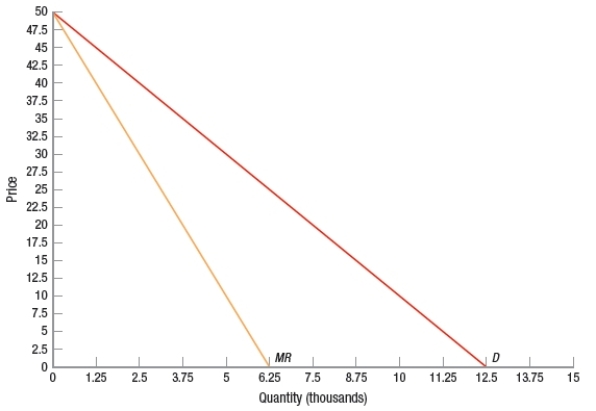(Figure: Multiple-Price Monopolist) The monopolist in the graph has market power; she can separate the market into different consumer groups based on their elasticities of demand, and she can prevent arbitrage. The monopolist has a marginal cost of $10. If she plans to charge $40 for the first 2,500 units; $30 for the next 2,500 units; $20 for the next 2,500 units; and $10 for the final 2,500 units, this is an example of _____ price discrimination, and the producer surplus for the monopolist would be _____.
Definitions:
Productivity
The efficiency at which individuals, companies, or economies produce goods or services, often measured as the amount of output per unit of input.
Sucker Effect
A phenomenon where individuals reduce their effort in group tasks to avoid feeling like they are being exploited or doing more work than others.
Free Riding
Free riding refers to the behavior of benefiting from the contributions of others in a group or community effort without contributing oneself.
Social Loafing
The phenomenon whereby individuals exert less effort to achieve a goal when they work in a group than when they work alone.
Q33: The Norwegian laundry detergent industry has one
Q42: If an industry has a Herfindahl-Hirschman Index
Q42: (Table) Based on the game table, where
Q118: If a prisoner's dilemma game is repeated
Q151: Jessie and Sammy are playing a game
Q182: To maximize profits, an unregulated natural monopoly
Q186: (Figure: Determining Profit) At price F, which
Q242: The kinked demand curve model-jointly developed by
Q265: The "dilemma" in the prisoner's dilemma is
Q282: Oligopolies maximize profits by setting MR equal